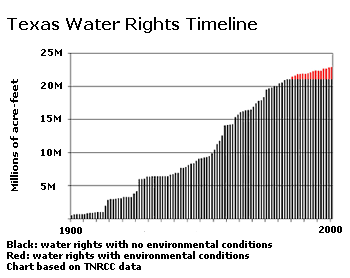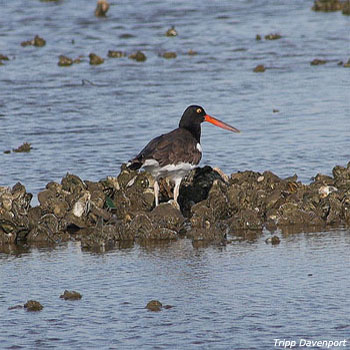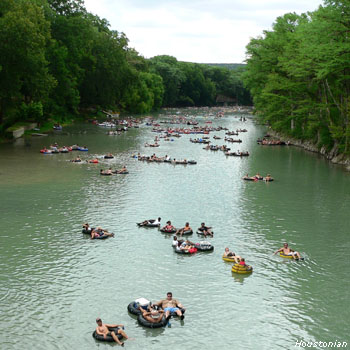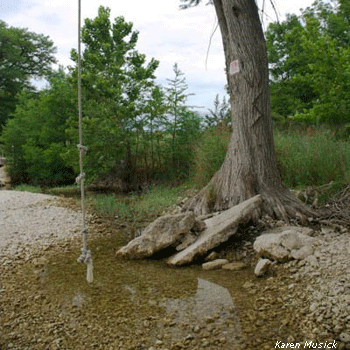|
| Home | | About Us | | Water Planning | |
Groundwater | |
Conservation | |
Environmental Flows | |
Drought Mgmt. | |
Resources | |
Search | | ||
|
Planning for Flows Updated October 7, 2010 Water is a vital feature of Texas' natural heritage. Fish and wildlife depend on water flowing in rivers and streams to sustain riparian vegetation and wetland areas and supply the bays and estuaries along the Gulf Coast with freshwater inflows. More than any other factor, the availability of water will determine the future of fish and wildlife in our state.Water Rights in Texas Historically, the water needs of fish and wildlife have been ignored in water allocation in Texas. Surface water is owned by the state which grants perpetual permits to use the water to individuals, corporations, and cities. Permits for more than 22 million acre-feet (an acre-foot is 325,851 gallons) have already been granted.  Texas, like most western states, operates primarily on the prior appropriation system in which the oldest water rights have the first claim on the available water. Before 1985, the state generally did not consider impacts on fish and wildlife when giving out permits. Unfortunately, over 90% of the water rights currently authorized were issued before 1985. Texas, like most western states, operates primarily on the prior appropriation system in which the oldest water rights have the first claim on the available water. Before 1985, the state generally did not consider impacts on fish and wildlife when giving out permits. Unfortunately, over 90% of the water rights currently authorized were issued before 1985.Since 1985, the Texas Commission on Environmental Quality and its predecessor agencies have included some level of environmental flow protections on new water rights; however, the level of protection varies widely from permit to permit. These environmental conditions normally involve a restriction on when, or how much, water can be taken from a river or stream to ensure some water still flows downstream. In a number of river basins, permits have been issued for all (and in some cases more than all) of the water that would be present in the stream during dry periods. If all water rights were fully used, those rivers and streams would go dry during a drought. Many existing water rights are not currently fully used, but that will likely change as Texas' population grows. In addition, many streams and rivers are dependent on "return flows" of treated wastewater. Today many cities and industries are beginning to reuse wastewater instead of treating it and returning to the river or stream-a trend that could have negative impacts in certain places. The National Wildlife Federation 2004 study, Bays in Peril, found that five of the seven major bay systems in the state would face serious problems if existing water rights were fully used and wastewater reuse were increased significantly. The NWF report only looked at existing permits - it did not consider potential impacts from currently pending permit applications. Determining Environmental Flow Needs Determining how much flow is necessary to maintain the health of our rivers and bays is not a simple matter. Different species, activities, and habitats may need varying amounts of flow at different times. In addition, the amount of water available varies from year to year. In drought years, we need to leave enough water in streams and rivers to allow fish and wildlife to survive; in wetter years we need to leave enough to allow them to recover from drought stresses and thrive.  Various techniques are available for determining how much flow is needed. For freshwater inflows to bays and estuaries, we generally have a fair amount of information to work with. The state has funded extensive scientific studies about many aspects of inflow needs for every major estuary system in the state; many privately funded studies have been done, as well.
Various techniques are available for determining how much flow is needed. For freshwater inflows to bays and estuaries, we generally have a fair amount of information to work with. The state has funded extensive scientific studies about many aspects of inflow needs for every major estuary system in the state; many privately funded studies have been done, as well.Less is known about instream flow needs. In 2001, state legislation created the Instream Flow Program, a comprehensive program to evaluate instream flow needs, but these studies will take time to complete. In the absence of intensive studies, desktop estimation methods can be used. Even in the absence of perfect information, there is often a need to develop estimates of environmental flow requirements for a particular system. The Nature Conservancy and others have developed a method, often called the "collaborative scientific approach," that involves convening a panel of scientific experts with a broad range of backgrounds and charging the panel with using their combined knowledge to examine the best information available to create a set of flow recommendations. The method works best when it is possible to modify the flow protections as new information becomes available. The Cypress Basin Flows Project has used this method successfully to determine flow requirements in Caddo Lake and its tributaries. Environmental Flows and Water Planning The State Water Planning process has generally fallen short in planning for environmental flow needs, despite a general mandate to protect the state's natural resources and a specific requirement to include water for the environment. In reality, the planning groups have limited funds, time and expertise at their disposal and the majority of regional water planning groups have done little to proactively plan for environmental flows. In order to create a truly comprehensive water plan, all regional water planning groups should do the following:
 Planning groups also have the option of recommending the designation of "unique stream segments" based on a river or stream's having high water quality, exceptional aquatic habitat, aesthetic value, threatened or endangered species, or other valuable features. The Texas Parks and Wildlife Department has identified river and stream segments that are potentially deserving of the designation. Designating a river as a "unique stream segment" prohibits the state from financing the construction of a reservoir in that location but has no impacts on a how a property owner might use their land. Nonetheless, only a handful of designations have been recommended.
Planning groups also have the option of recommending the designation of "unique stream segments" based on a river or stream's having high water quality, exceptional aquatic habitat, aesthetic value, threatened or endangered species, or other valuable features. The Texas Parks and Wildlife Department has identified river and stream segments that are potentially deserving of the designation. Designating a river as a "unique stream segment" prohibits the state from financing the construction of a reservoir in that location but has no impacts on a how a property owner might use their land. Nonetheless, only a handful of designations have been recommended. A comprehensive water plan that includes water for environmental needs and avoids unnecessarily destructive projects is more likely to implemented than a plan that is prepared without careful consideration of those factors. Protecting Environmental Flows The push for legal protections for environmental flows has a long history in Texas. The San Marcos River Foundation (SMRF) made history in 2000 by applying for a new water right permit to keep water flowing in the San Marcos River and into San Antonio Bay. Several other organizations soon joined SMRF and applied for water rights in other regions of the state. These applications generated vocal opposition from water suppliers, and the TCEQ Commissioners dismissed the applications without a hearing. In response to those applications, the Legislature enacted a temporary moratorium prohibiting any new permits for environmental flow protection, and created the Study Commission on Water for Environmental Flows which was charged with considering alternate ways to protect environmental flows. The Study Commission issued recommendations for an approach to flow protection that was included as Article 1 of Senate Bill 3 in 2005. Because Senate Bill 3 was not adopted in 2005, Governor Perry appointed an Environmental Flows Advisory Committee to continue work on the environmental flows issue. On the last day of the 2007 session of the Texas Legislature, a new Senate Bill 3 was finally adopted, establishing the Environmental Flows Allocation Process. Through the Environmental Flows Allocation Process, the state will formally set some water aside for environmental flows in areas where unappropriated water still is available. Water reserved in this way will not be available for permitting for any other use. In much of the state, there is little or no unappropriated water available to be set aside for environmental flows. For these areas, other approaches will be necessary. Existing water rights could be donated-or purchased and then donated-into the Texas Water Trust. The state could also place new environmental flow protections when an existing permit is sold or when a new use is applied for. Similarly, the state might consider mechanisms for ensuring that reasonable amounts of wastewater flows will continue to be returned to streams and rivers.
What You Can Do  The only way to ensure that Texas streams, rivers, and bays are protected is to let policy-makers know that is what Texans want. Here are some things YOU can do:
The only way to ensure that Texas streams, rivers, and bays are protected is to let policy-makers know that is what Texans want. Here are some things YOU can do:Use water wisely in your daily life and learn more about what cities can do to encourage water conservation on a larger scale. Get involved in or stay abreast of the Environmental Flows Allocation Process, the new state process for identifying and preserving flowing rivers and freshwater inflows into Texas coastal bays and estuaries. Contact your state legislators and tell them to make sure that water planning and water policy in Texas should protect the water flowing in our rivers and into our coastal bays. |
|
|||||||||||||||||||||||


 Environmental
Environmental